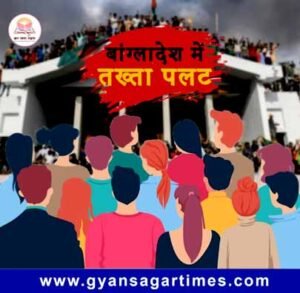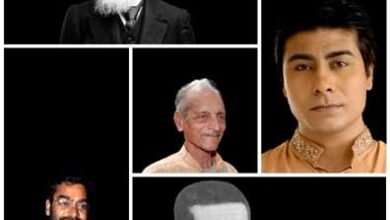
बांग्लादेश में तख्ता पलट
बांग्लादेश में तख्ता पलट की घटनाएँ 1970 के दशक के अंत और 1980 के दशक की शुरुआत में काफी सामान्य थीं. यहाँ प्रमुख तख्ता पलट घटनाएँ और उनकी पृष्ठभूमि पर प्रकाश डाला गया है: –
पहला तख्ता पलट (1975): – यह बांग्लादेश के पहले राष्ट्रपति शेख मुजीबुर रहमान के खिलाफ था.15 अगस्त 1975 को, एक सैन्य विद्रोहियों के समूह ने राष्ट्रपति शेख मुजीबुर रहमान और उनके परिवार के कई सदस्यों की हत्या कर दी. इस तख्ता पलट के दौरान, सेना ने सत्ता पर कब्जा कर लिया और जनरल मुहम्मद एहसान के नेतृत्व में एक नई सरकार स्थापित की. यह तख्ता पलट बांग्लादेश में राजनीतिक अस्थिरता और सैन्य शासन की शुरुआत का संकेत था. इसके बाद, बांग्लादेश में कई वर्षों तक सैन्य और तानाशाही शासन चला.
दूसरा तख्ता पलट (1982): – यह तख्ता पलट जनरल हुसैन मोहम्मद इरशाद द्वारा किया गया था. जनरल हुसैन मोहम्मद इरशाद ने एक सैन्य तख्ता पलट के माध्यम से बांग्लादेश के राष्ट्रपति, स्वतंत्रता सेनानी, और लोकतांत्रिक सरकार को हटा दिया. इरशाद ने राष्ट्रपति की सत्ता पर कब्जा कर लिया और एक सैन्य शासन की शुरुआत की.
इरशाद की सरकार ने देश में राजनीतिक और सामाजिक स्थिरता के लिए कई प्रयास किए, लेकिन उन्होंने अपनी तानाशाही शैली को जारी रखा. उनका शासन 1990 तक चला, जब उन्हें जन विरोध और लोकतांत्रिक आंदोलन के दबाव में इस्तीफा देना पड़ा.
तख्ता पलट के बाद बांग्लादेश में कई सालों तक अस्थिरता और सैन्य शासन का दौर चला, लेकिन अंततः 1990 के दशक के प्रारंभ में लोकतंत्र की वापसी हुई. देश ने धीरे-धीरे एक स्थिर लोकतांत्रिक शासन की ओर कदम बढ़ाए.
इन घटनाओं ने बांग्लादेश की राजनीतिक स्थिरता को प्रभावित किया और देश की राजनीति में एक महत्वपूर्ण मोड़ का संकेत दिया. इन तख्ता पलटों ने बांग्लादेश की राजनीतिक संरचना और नागरिक जीवन को गहराई से प्रभावित किया.
========== ========= ===========
Coups in Bangladesh

Coups in Bangladesh were quite common in the late 1970s and early 1980s. Here are the highlights of the major coups and their background:-
First Coup (1975):- It was against Bangladesh’s first president Sheikh Mujibur Rahman. On 15 August 1975, a group of military rebels assassinated President Sheikh Mujibur Rahman and several members of his family. During this coup, the army seized power and installed a new government led by General Muhammad Ahsan. This coup marked the beginning of political instability and military rule in Bangladesh. After this, Bangladesh was ruled by military and dictatorial rule for several years.
Second Coup (1982):- This coup was carried out by General Hussain Mohammad Ershad. General Hussain Mohammad Ershad removed the president, freedom fighter, and democratic government of Bangladesh through a military coup. Ershad seized the presidential power and started a military rule.
Ershad’s government made several attempts to bring political and social stability to the country, but he continued his dictatorial style. His rule lasted until 1990 when he was forced to resign under the pressure of mass protests and democratic movement.
After the coup, Bangladesh experienced several years of instability and military rule, but eventually, democracy returned in the early 1990s. The country gradually moved towards a stable democratic rule.
These events affected the political stability of Bangladesh and marked a turning point in the country’s politics. These coups deeply affected the political structure and civil life of Bangladesh.





